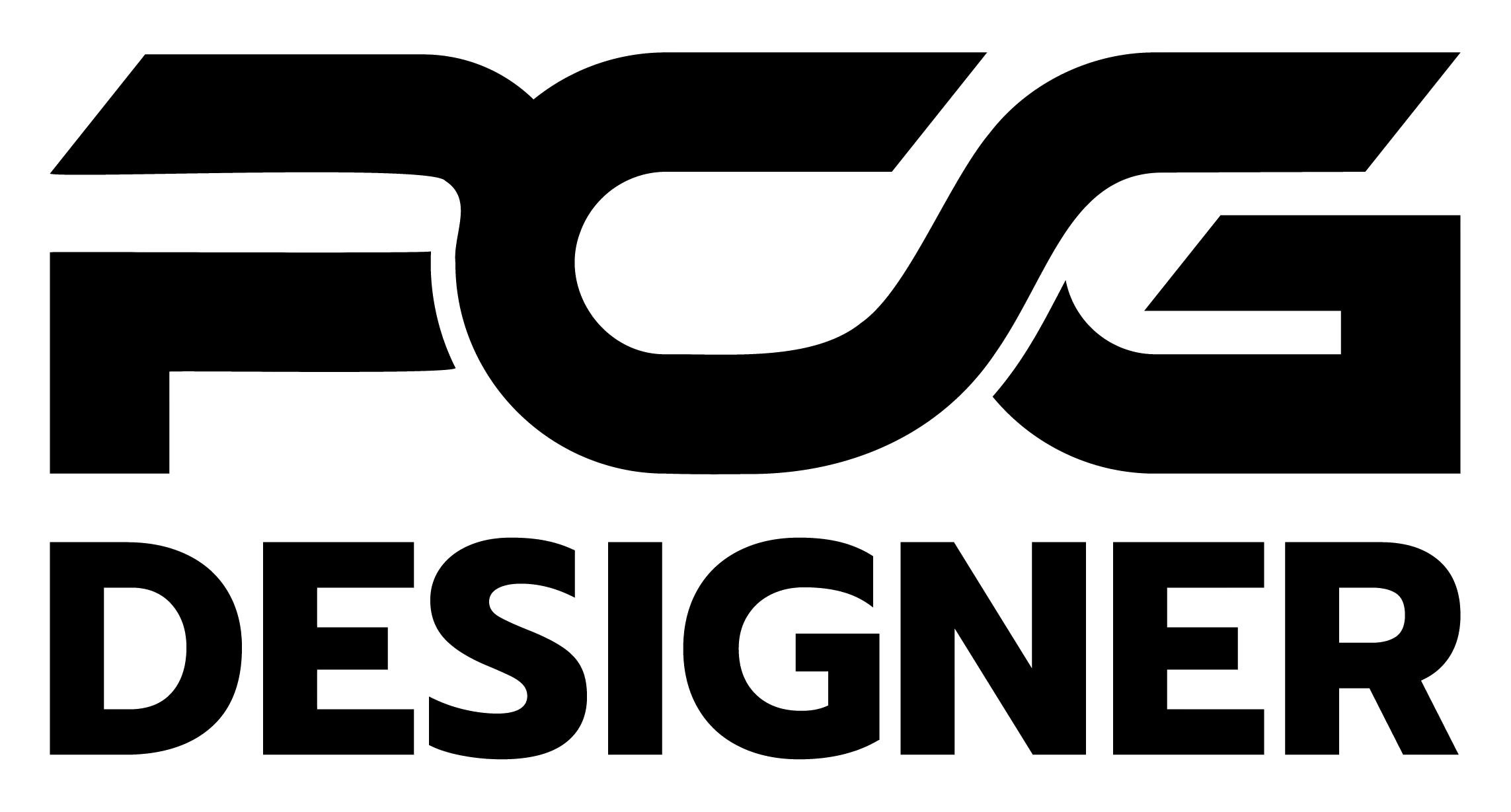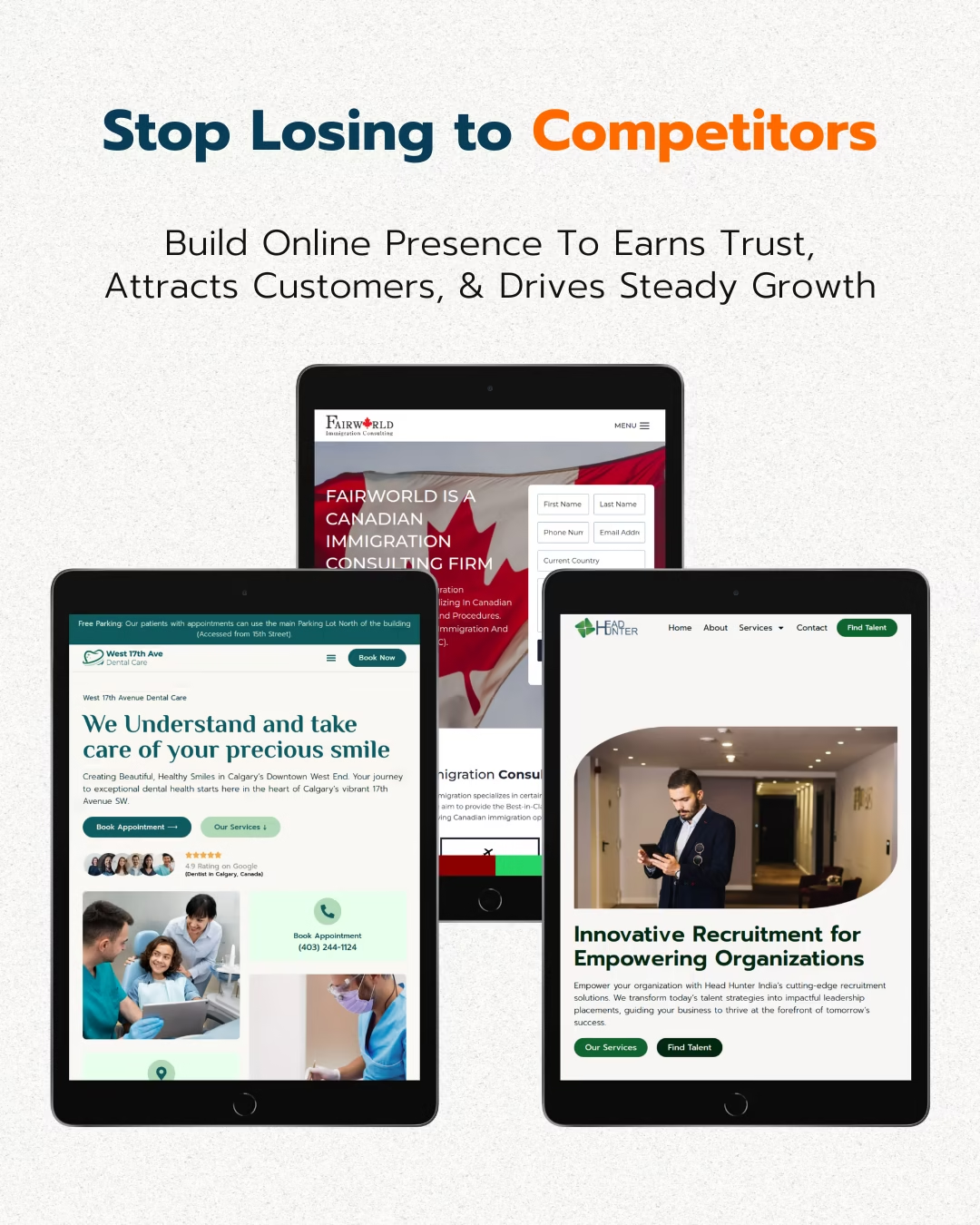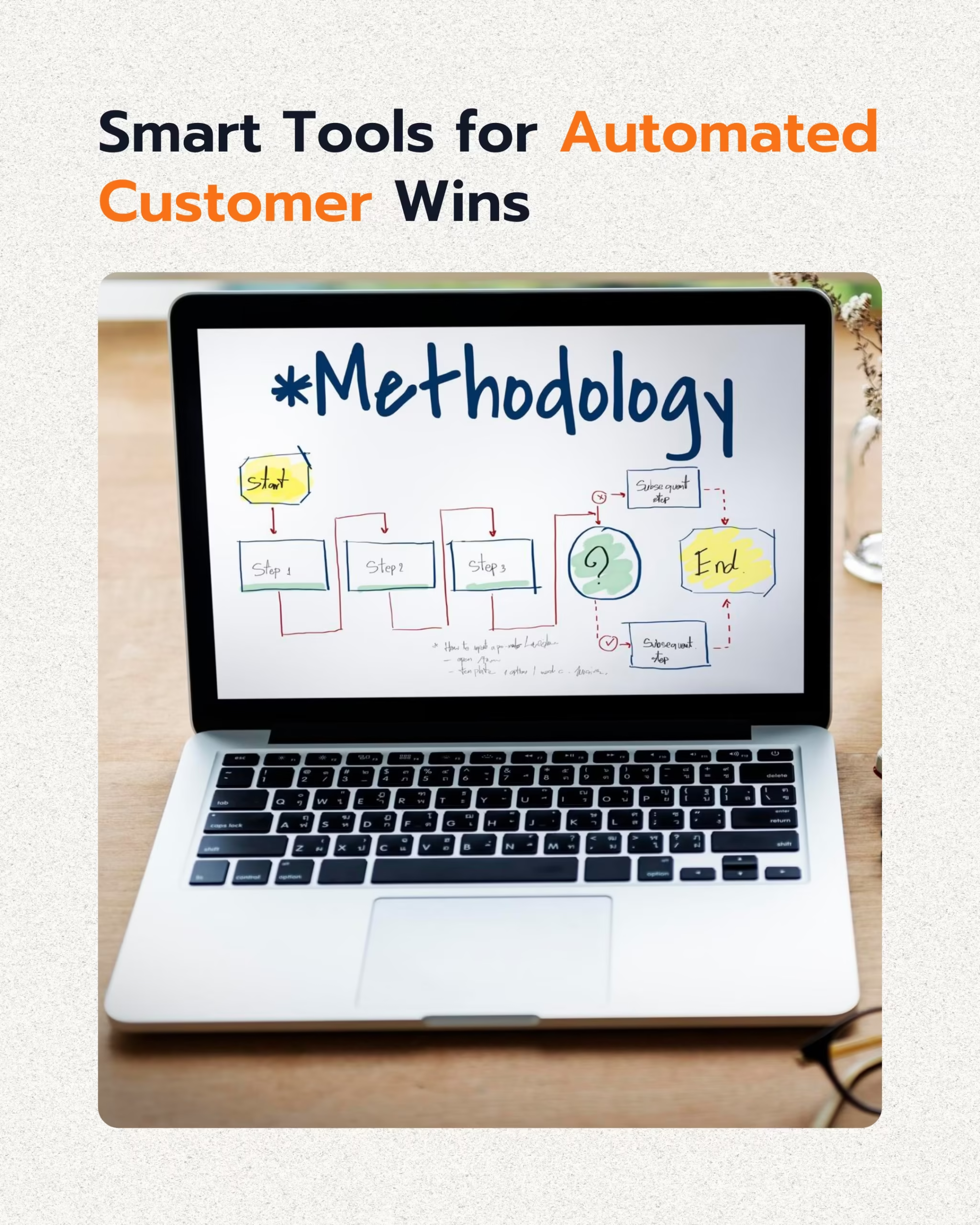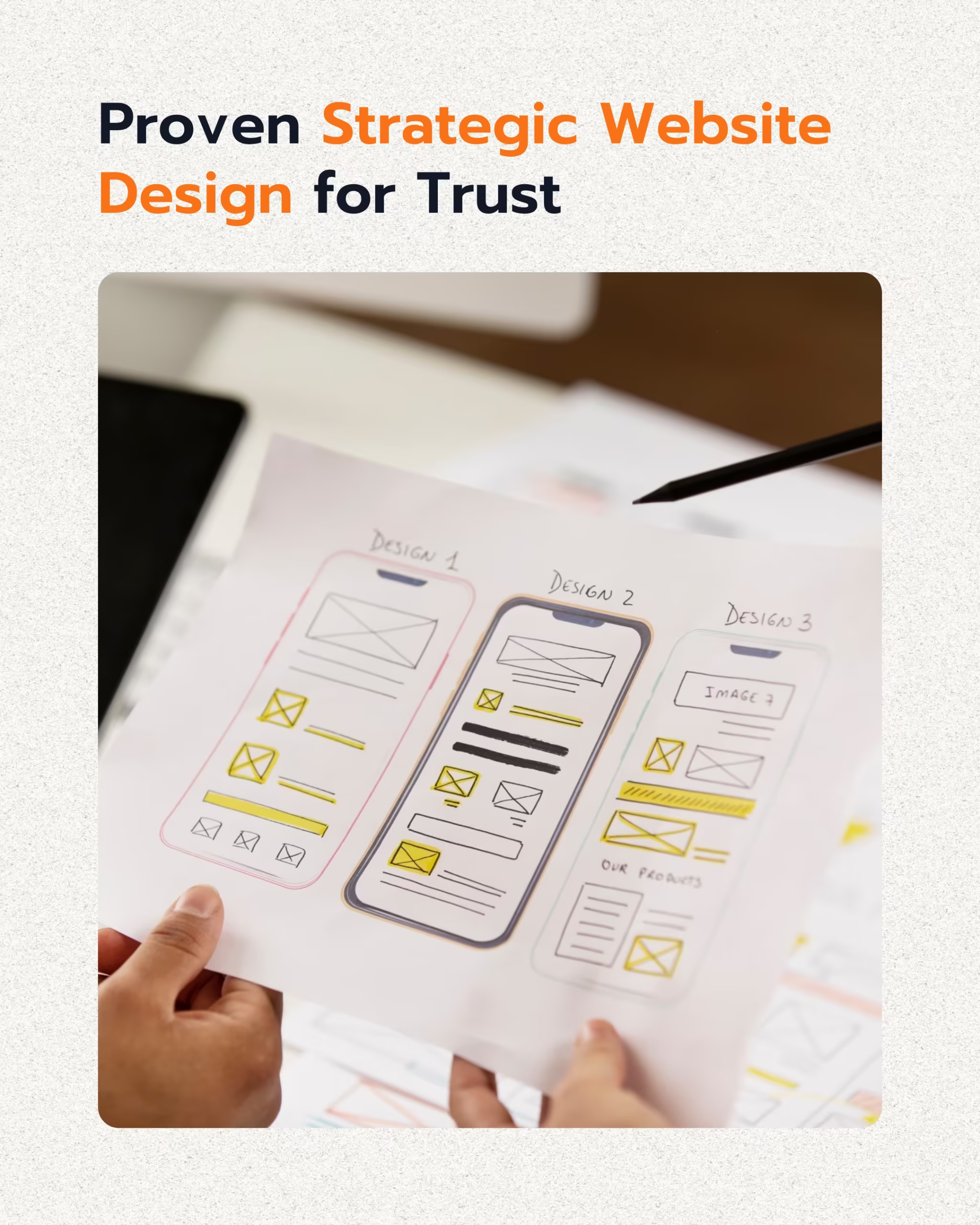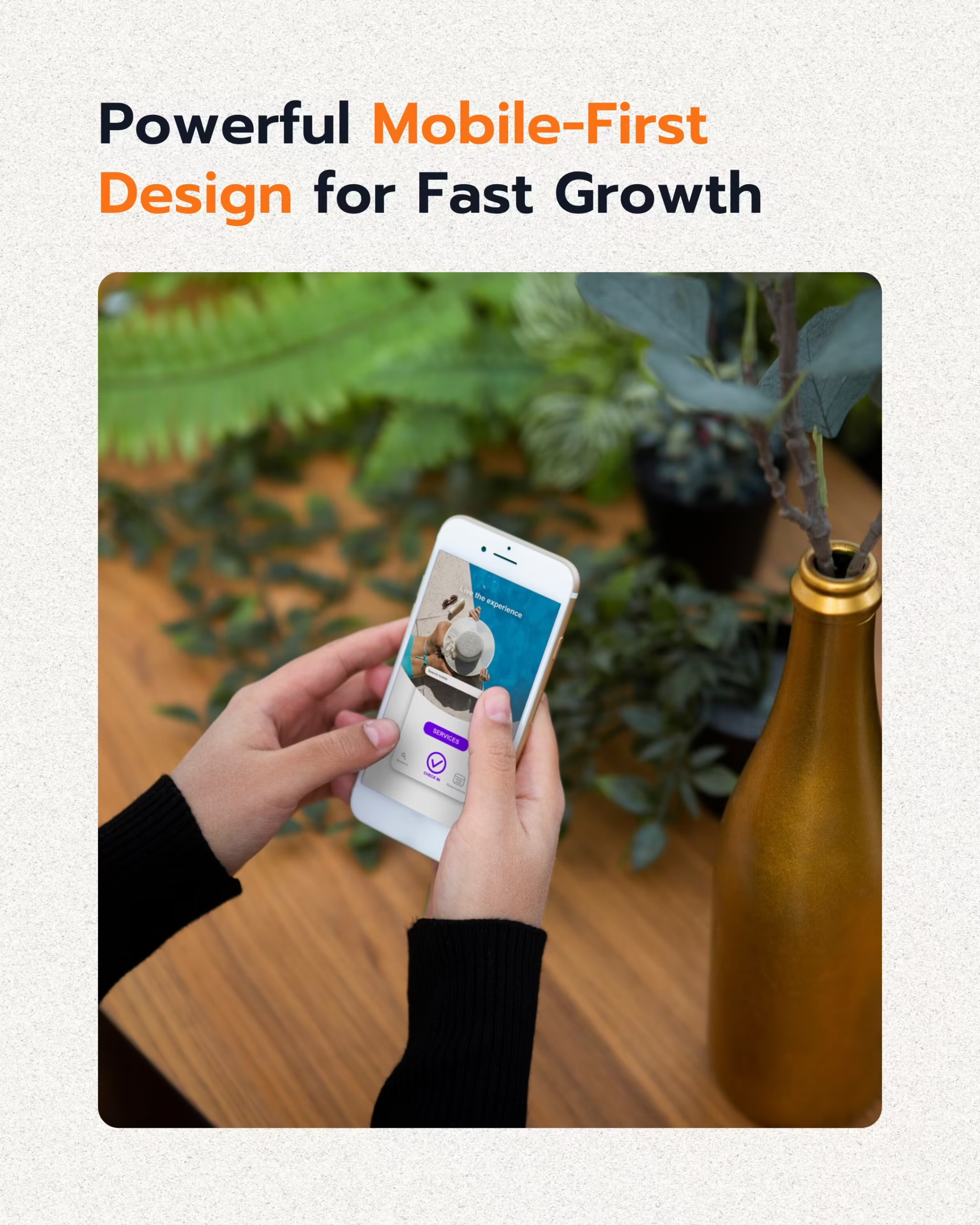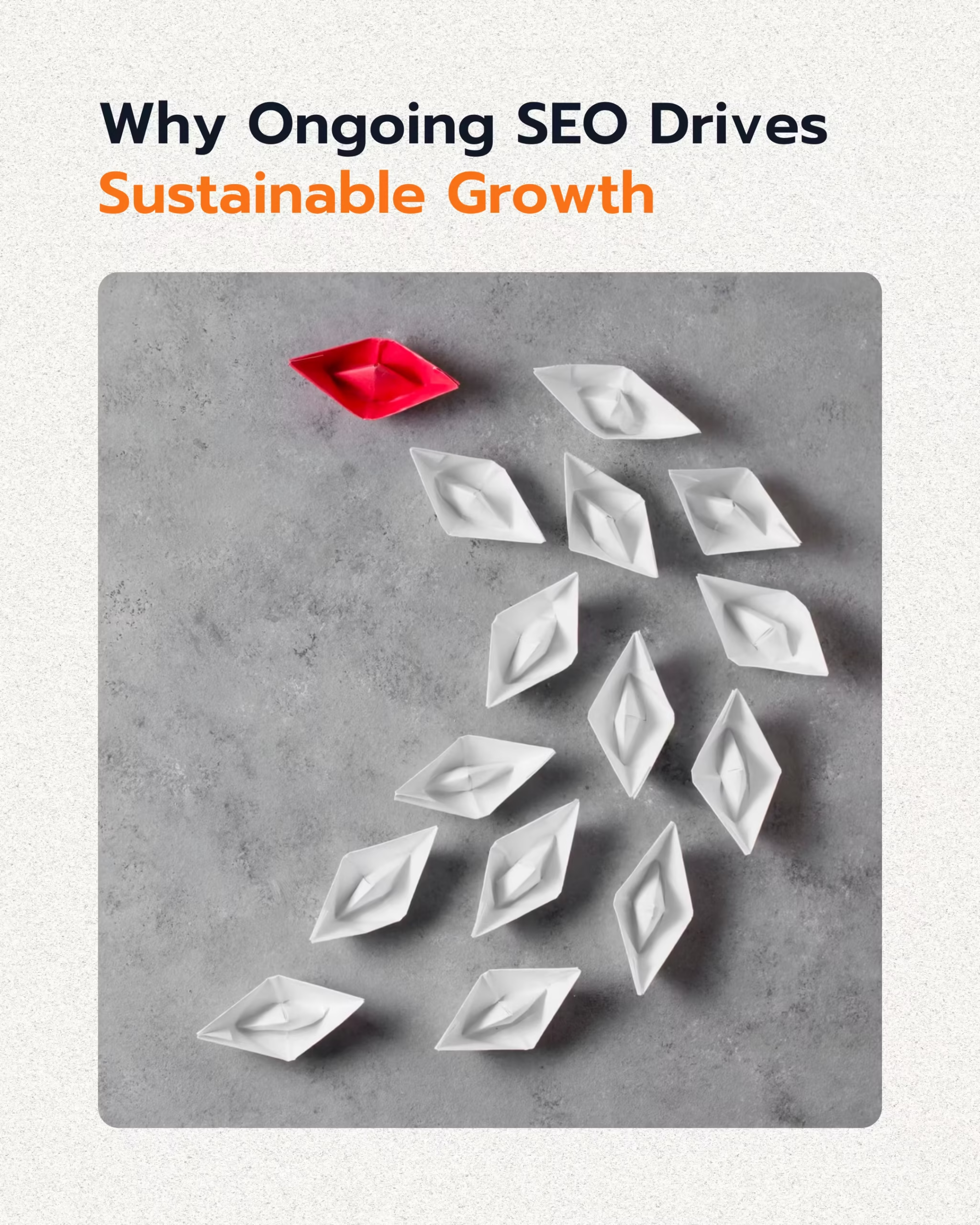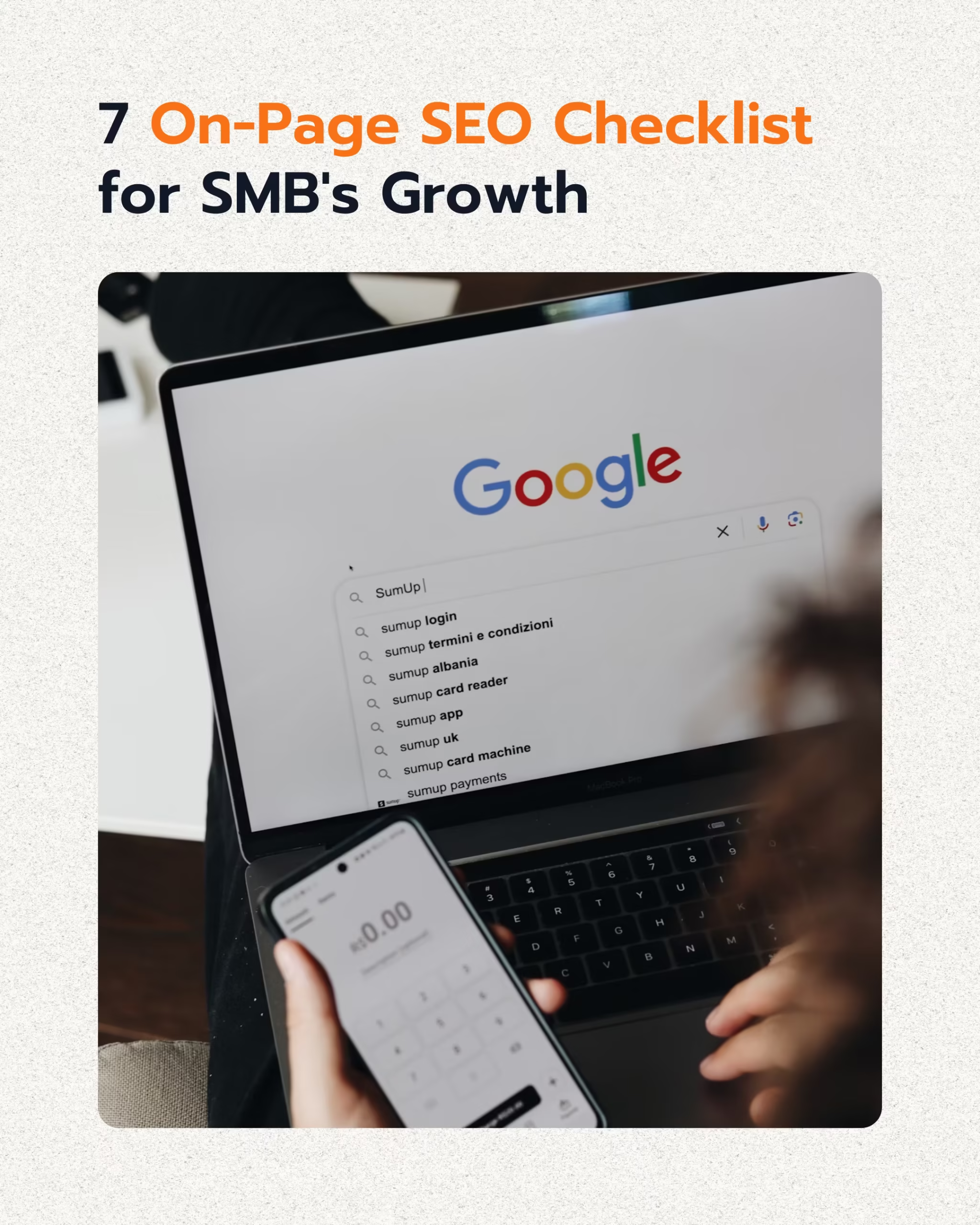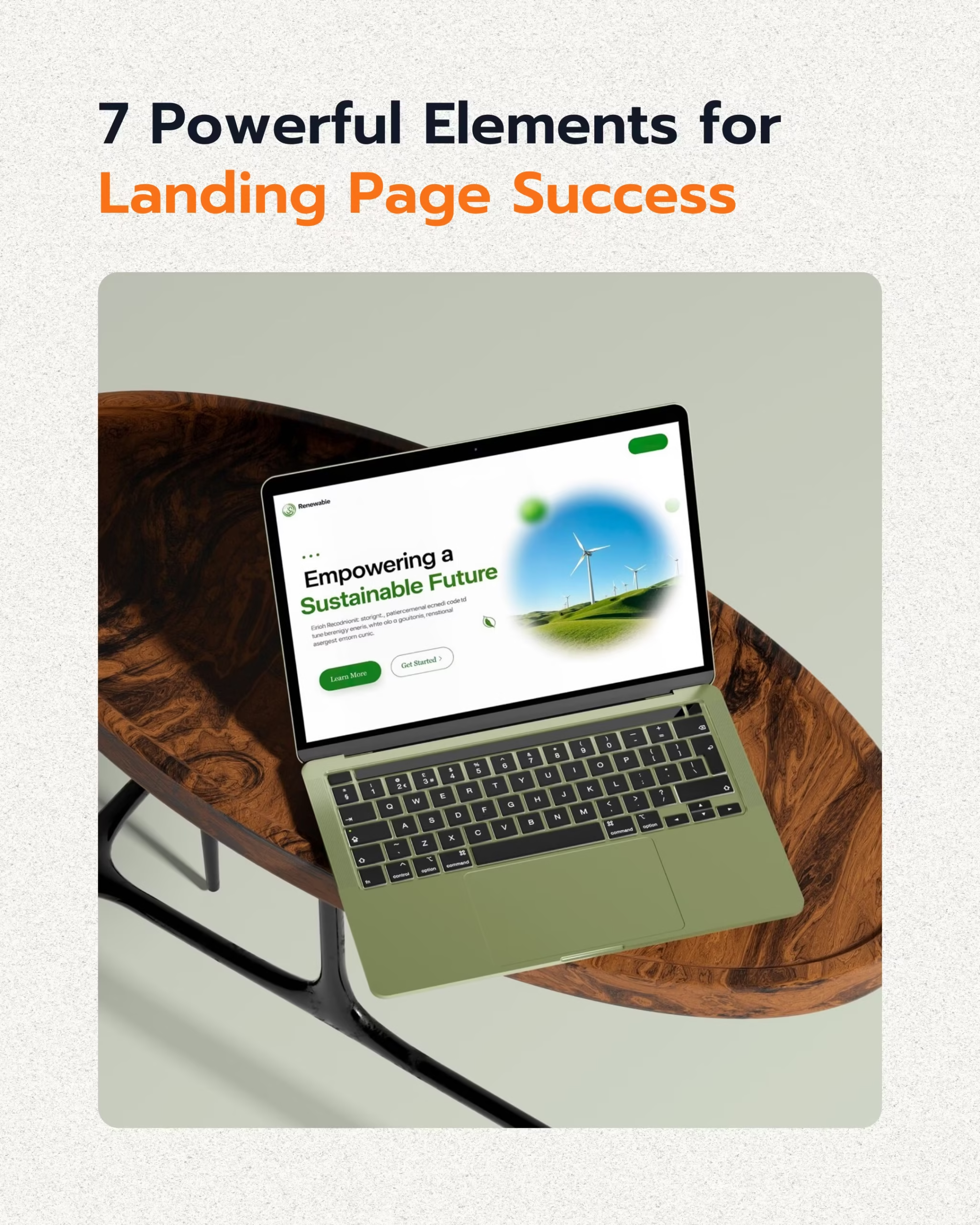A strong online presence is no longer optional for small businesses; it is a fundamental pillar of any effective business strategy. Your website serves as your digital storefront, your primary communication channel, and a powerful tool for customer acquisition and retention. Neglecting key pages can deter potential customers and hinder growth, especially when 36% of small businesses still lack a website, often due to perceived costs or operation size [1].
This guide explores the essential website pages every small business needs, supported by current market data and business strategy best practices. We will cover critical elements like homepage design, the importance of an “About Us” section, and how product pages drive conversions, all while integrating business strategy trends to ensure your site is optimized for success.
Homepage: Crafting First Impressions
In Essential Website Pages Homepage is your website’s virtual lobby, where you have a brief window to capture visitor attention and convey your value. It must be engaging, informative, and guide users toward their next step. The U.S. Small Business Administration emphasizes that you have “less than 10 seconds” to convey your value proposition compellingly [10].

What Makes a Homepage Effective?
An effective homepage combines visual appeal with clear messaging and intuitive navigation. It acts as a central hub, directing visitors to relevant sections of your site. For instance, 87% of small businesses display photographs on their homepage to engage visitors and build brand presence [4]. This visual element is critical for making an immediate connection.
- Clear Value Proposition: State what you do and who you serve immediately.
- Engaging Visuals: Use high-quality images or videos that reflect your brand.
- Prominent Calls-to-Action (CTAs): Guide visitors to desired actions like “Shop Now” or “Get a Quote.”
- Easy Navigation: A well-structured menu helps users find information quickly.
Why is a Strong Homepage Crucial?
A well-designed homepage is vital for conversion and credibility. Studies show that 70% of small business sites lack appropriate calls-to-action (CTAs) on their homepage, missing opportunities for conversion [4]. A strong homepage also contributes to your overall business strategy solutions by setting the tone for your brand and establishing trust. For example, the “Laurie” website template for solo entrepreneurs effectively uses client photos and a clear business name to build trust and emotional connection [14].
Key Homepage Elements to Consider
Beyond aesthetics, a homepage needs functional elements that support your business strategy. This includes easily accessible contact information, as 40% of visitors will leave if they cannot find contact details [4]. Integrating social media links also expands your reach and engagement.
- Hero Section: A compelling headline and image above the fold.
- Service/Product Highlights: Briefly showcase your main offerings.
- Testimonials/Social Proof: Build credibility with customer feedback.
- Contact Information: Clearly visible phone number, email, or a link to your contact page.
About Us: Building Trust and Connection
The “About Us” page is where your small business tells its story becomes essential website pages list, humanizes its brand, and builds a deeper connection with visitors. It is not just about facts; it is about personality and purpose. The SBA highlights that this page is key because “people do business with other people,” suggesting it should reflect the company’s ethos and personality [10].

Why an About Us Page Matters for Business Strategy
This page is crucial for establishing credibility and fostering trust, which are vital components of any business strategy best practices. While not always directly quantifiable, 48% of small business owners state their website enhances credibility [5]. An authentic “About Us” page contributes significantly to this perception.
- Humanize Your Brand: Share your story, mission, and values.
- Build Credibility: Introduce your team with photos and bios.
- Foster Connection: Explain why you started your business and what drives you.
What to Include on Your About Us Page
To make your “About Us” page effective, focus on transparency and authenticity. Avoid generic corporate language. Instead, share specific details that resonate with your target audience. For example, including team photos can help humanize the brand [10].
- Company Story: How and why your business began.
- Mission and Values: What you stand for and aim to achieve.
- Team Bios and Photos: Introduce the people behind the business.
- Milestones or Achievements: Highlight key successes.
Examples of Effective About Us Pages
Consider businesses that effectively use their “About Us” page to connect. A local bakery might share its family history and passion for baking, while a tech startup could highlight the innovative spirit of its founders. The goal is to create a narrative that makes visitors feel they know and trust your business, aligning with your overall business strategy guide.
Products & Services: Showcasing Offerings
Your product and service pages are the core of your website’s commercial function. These pages must clearly articulate what you offer, its benefits, and how customers can acquire it. With 56% of global consumers preferring to shop online anytime [4], these pages are critical for driving sales and inquiries.
Optimizing Product and Service Pages
Effective product pages go beyond simple descriptions. They anticipate customer questions, address potential concerns, and guide them toward a purchase. Poor product search functions cause 60% of shoppers to desire better experiences [4], underscoring the need for detailed, well-organized content.
- Detailed Descriptions: Explain features, benefits, and use cases.
- High-Quality Imagery/Video: Showcase your offerings visually.
- Clear Pricing: Be transparent about costs to avoid cart abandonment (27%-48% abandon carts due to complications or hidden costs [4]).
- Customer Reviews: Integrate testimonials directly on product pages.
Driving Conversions with Strong CTAs
Every product or service page should have a clear call-to-action. Whether it is “Add to Cart,” “Request a Demo,” or “Book Now,” these CTAs are essential for converting interest into action. The “Juniper” restaurant website, for example, highlights signature dishes with direct links to menus and booking systems, effectively driving customer action [14].
Structuring Your Offerings
For businesses with multiple products or services, categorization and filtering options are essential. This improves user experience and helps visitors find what they need quickly, a key aspect of business strategy best practices. Well-organized pages reduce visitor confusion, potentially increasing purchase rates and customer engagement.
| Element | Purpose | Impact on Conversion |
|---|---|---|
| High-Resolution Images | Visual appeal, product understanding | Increases engagement by 30% |
| Detailed Specifications | Informs purchasing decisions | Reduces returns by 15% |
| Clear Call-to-Action | Guides user to next step | Boosts click-through rates by 20-50% |
| Customer Reviews | Builds trust and social proof | Increases sales by 18% |
Contact Page: Facilitating Connection
A readily accessible and user-friendly contact page is non-negotiable for any small business website. It provides a direct channel for inquiries, support, and feedback, reinforcing trust and reliability. As mentioned, 40% of visitors will leave a website if contact information is missing [4].

Essential Contact Information
Your contact page should offer multiple ways for customers to reach you, catering to different preferences. This aligns with a comprehensive business strategy that prioritizes customer service. Prominently display your phone number, email address, and physical address if applicable [10].
- Phone Number: Direct line for immediate inquiries.
- Email Address: For detailed questions or non-urgent communication.
- Physical Address: Important for local businesses or those with a storefront.
- Operating Hours: Manage expectations for response times.
The Power of a Contact Form
A contact form simplifies the process for visitors to send messages without leaving your site or opening their email client. This reduces friction and increases the likelihood of an inquiry. Ensure the form is simple, mobile-friendly, and includes essential fields like name, email, and message.
Integrating Location and Social Media
For brick-and-mortar businesses, embedding a map (e.g., Google Maps) on your contact page helps customers find your location easily. Additionally, link to your active social media profiles, providing alternative channels for engagement and support. This multi-channel approach is a key business strategy solution for modern customer interaction.
Testimonials: Leveraging Social Proof
Testimonials and reviews are powerful forms of social proof that build confidence and trust in your brand. They offer unbiased perspectives from satisfied customers, influencing potential buyers more effectively than direct marketing claims. The U.S. Small Business Administration emphasizes that testimonials build social proof and credibility, influencing visitor trust and purchase decisions [10].

Why Testimonials are a Critical Business Strategy
In a competitive market, customer validation can differentiate your business. Displaying genuine feedback helps overcome skepticism and reassures new visitors about the quality of your products or services. This is a core component of effective [12].
- Builds Trust: Shows that real people have benefited from your offerings.
- Increases Credibility: Validates your claims through third-party endorsement.
- Influences Decisions: Guides potential customers toward a purchase.
Best Practices for Displaying Testimonials
To maximize the impact of testimonials, present them authentically and strategically. Include details that add credibility, such as the customer’s name, company, and even a photo if available. Consider placing testimonials on relevant product/service pages, your homepage, and a dedicated “Testimonials” page.
- Use Real Names and Photos: Enhances authenticity.
- Include Specific Details: Highlight how your business solved a problem or delivered value.
- Vary Testimonial Formats: Use text, video, or audio snippets.
- Update Regularly: Keep your social proof current and fresh.
Collecting and Curating Feedback
Actively solicit feedback from satisfied customers. This can be done through post-purchase emails, follow-up calls, or dedicated feedback forms. Curate the most compelling testimonials that highlight different aspects of your business, creating a diverse and persuasive collection that supports your business strategy guide.
Mobile Optimization & Blogging for Growth
While not single “pages,” mobile optimization and a blog are essential components that enhance every page of your small business website, driving engagement and improving search engine visibility. Mobile-friendliness is no longer a luxury; 94% of small business websites are mobile-friendly [1], and 84% of visitors prefer mobile-friendly sites [2].

The Imperative of Mobile Optimization
With the majority of internet traffic coming from mobile devices, a responsive design ensures your website adapts seamlessly to any screen size. This is a fundamental aspect of modern business strategy trends. A poor mobile experience can lead to high bounce rates and lost customers.
- Responsive Design: Ensures optimal viewing across devices.
- Fast Loading Times: Mobile users expect quick access to information.
- Easy Navigation: Simplified menus and touch-friendly elements.
Blogging as a Content Strategy
A blog provides a platform to share expertise, attract organic traffic through SEO, and engage your audience with valuable content. It is a dynamic way to keep your website updated, which is crucial since 83% of users appreciate attractive, current sites [3], and 25% of business sites are updated less than once per year [1].
Benefits of a Small Business Blog
Integrating a blog into your business strategy solutions can significantly boost your online presence. It allows you to address common customer questions, establish thought leadership, and provide fresh content for search engines to crawl.
- Improved SEO: Regularly updated content helps rank higher in search results.
- Thought Leadership: Position your business as an expert in your field.
- Customer Engagement: Provide valuable information and foster community.
- Lead Generation: Convert blog readers into potential customers.
Email Capture and Newsletter Signup
While 68% of small businesses do not have an email address visible on the homepage [1], integrating email capture forms (e.g., for newsletters) is a powerful business strategy. It allows you to build a direct communication channel with your audience, offering personalized content and promotions. This is especially relevant given that 60% of online shoppers value personalized offers [5].
Frequently Asked Question FAQ’s
How do I determine which essential pages my small business website needs?
Start by identifying your core business goals and your target audience’s needs. Essential pages typically include a Homepage, About Us, Products/Services, Contact, and Testimonials. Consider what information your customers frequently seek and what actions you want them to take.
What are the most critical elements for a small business website homepage?
A critical homepage needs a clear value proposition, engaging visuals, prominent calls-to-action (CTAs), and easy navigation. For example, 87% of small businesses use photos to engage visitors, and clear CTAs guide users. You have less than 10 seconds to make an impact, so clarity is key.
Why should a small business invest in an “About Us” page?
An “About Us” page builds trust and connection by humanizing your brand. It allows you to share your story, mission, and team, which helps establish credibility. 48% of small business owners say their website enhances credibility, and a strong “About Us” page contributes significantly to this.
When to add a blog to my small business website?
Add a blog when you want to improve SEO, establish thought leadership, and engage your audience with fresh content. It is a powerful tool for attracting organic traffic and demonstrating expertise, especially since 83% of users appreciate attractive, current sites.
How does mobile optimization impact my business strategy?
Mobile optimization is crucial because it ensures your website is accessible and user-friendly on all devices. With 84% of visitors preferring mobile-friendly sites, a non-responsive site can lead to high bounce rates and lost customers, directly impacting your business strategy and revenue.
What should I include on my product/service pages to drive sales?
Include detailed descriptions, high-quality images/videos, clear pricing, and customer reviews. Transparency about costs is vital, as 27%-48% of carts are abandoned due to complications or hidden costs. Strong calls-to-action are also essential.
Why is a contact page so important for small businesses?
A contact page is important because it provides a direct, accessible channel for customer inquiries and support. 40% of visitors will leave a website if contact information is missing, highlighting its role in building trust and facilitating communication.
How can testimonials benefit my small business website?
Testimonials build social proof and credibility, influencing visitor trust and purchase decisions. They offer unbiased validation from satisfied customers, which can be more persuasive than direct marketing. Displaying genuine feedback helps overcome skepticism and reassures new visitors.
What role does email capture play in a small business’s online presence?
Email capture allows businesses to build a direct communication channel with their audience for marketing and customer retention. While 68% of small businesses lack a visible email on their homepage, it is a powerful tool for offering personalized content and promotions, aligning with business strategy best practices.
Are there any pages that are often overlooked but still important?
Yes, an FAQ page, privacy policy, and terms of service are often overlooked but crucial. An FAQ page improves user experience, as 94% of users value easy navigation, while legal pages build trust and ensure compliance.
How often should a small business website be updated?
Your website should be updated regularly to keep content fresh, maintain security, and improve user experience. While 25% of business sites are updated less than once per year, frequent updates (especially through a blog) are vital for SEO and engaging visitors.
What is the average cost for a small business to develop a website?
The cost varies significantly, but 28% of small businesses spend less than $500 on website development. However, 73% commit to original design, indicating a growing investment in quality sites that align with a strong business strategy.
Conclusion
Building a robust online presence is a foundational business strategy for any small enterprise. By prioritizing these essential website pages Homepage, About Us, Products/Services, Contact, and Testimonials and integrating crucial elements like mobile optimization and a blog, businesses can establish credibility, engage customers, and drive growth. The data consistently shows that investing in a well-structured, user-friendly website directly translates to increased customer acquisition and enhanced brand perception. Your website is more than just an online brochure; it is a dynamic tool that, when optimized, becomes a powerful engine for your business’s success.
